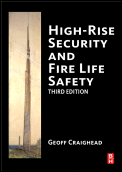Henderson City Ordinance 2649 adopted an amended version of the 2006 International Fire Code (IFC), as the fire code for the city of Henderson. It also contained an amendment that stated the fire department would no longer respond to unverified fire alarms.
The ordinance specifically says that “group R-3 (residential) occupancies, shall not be monitored unless approved by the Chief.” The ordinance also specifically states that while “the supervising station shall retransmit water flow alarm signals from fire sprinkler and fire alarm monitoring systems to the Fire Department, the supervising station shall not retransmit other signals to the Fire Department, except for government buildings, schools, and hospitals.”
Steve Goble, Henderson deputy fire chief, explained that water flow alarms are accepted by the fire department because those specific alarms are “a good indicator of a fire problem.”
The city justifies the ordinance for several main reasons.
“There were two major issues that ultimately drove us to this decision,” Goble said. “First, we believe strongly that our ‘first due’ resources are available to run true emergencies more frequently as a result of this change in policy. Firefighter safety is the other issue that we feel was an important consideration. Emergency response is dangerous; driving to and from emergencies accounts for a number of firefighter injuries and deaths each year. It is also dangerous to our citizens; our large apparatus can have a devastating effect on a passenger car when collisions occur.”
Alarm companies don’t buy it.
“We are completely baffled by the decision made by the City of Henderson Fire Department to stop responding to fire alarm signals in residential buildings (and most commercial sites),” said Stan Martin, executive director of the Security Industry Alarm Coalition (SIAC). “For over 30 years fire chiefs across the country have urged the alarm companies to contact their 911 centers as quickly as possible so they can respond at the earliest possible time.... The relationship between fire departments and alarm companies is one of oldest public/private partnerships in the United States and has resulted in untold thousands of lives being saved over the last 100 years.”
According to Goble, the decision came after the fire department conducted a statistical analysis of its fire alarm responses.
“Over a three-and-a-half year period we responded to more than 4,000 alarms called in by monitoring companies,” Goble said. “Of these calls, more than 99.9 percent were false alarms or required no intervention from our responders. The remaining 0.1 percent was mostly cooking errors; none of the remaining calls resulted in any sort of significant problem. Through the course of the study we did not find a single instance of a fire in a building that was called in exclusively by a monitoring company.”
The city will only respond to unverified alarms when the occupancy is a high-risk occupancy such as a school, hospital or government building.
This doesn’t sit well with Martin either, who wonders why the exception can be justified legally.
“How can anyone explain why hospitals, schools and municipal buildings are exempt from this policy? Martin asked. “How can anyone pick and choose which buildings get response from those that don’t? Creating any elite category of service recipient claws at the underpinnings of the U.S. Constitution that calls for “equal protection under the law.
“We know from our experiences in other cities that citizens want a chance to participate in these life-changing policies that involve public safety; usually they are notified by the city and public hearings allow their input. To our knowledge, that never happened in these communities,” Martin said.
But according to Goble, “the policy was posted and presented in a regularly scheduled City Council meeting in accordance with the Henderson Municipal Code.”
SIAC’s Martin believes these cities have done what amounts to selectivity of standard, traditional life safety practices.
“We have nationally recognized fire codes and standards that have been developed by hundreds of fire safety experts and professionals from all over the country that require and specify installation and response procedures, yet Henderson and Las Vegas have chosen to ignore very fundamental parts they don’t agree with,” Martin said.
Still, Goble believes Henderson’s department is following the right approach, and admits that there has been just moderate feedback about the policy.
“The majority of citizens understand our stance when presented with the statistical information. We tell them that we do respond to verified alarms; if they smell smoke, see smoke, or suspect a problem we encourage them to call 911 and we will respond,” Goble said.
It is a severe method of saving money, Martin thinks. “Other than Henderson and Las Vegas, no other communities in this country have approached ‘saving money’ in such a radical way. It raises serious public safety issues for all of us,” he said.
Editor’s note: The National Burglar & Fire Alarm Association has an official position paper on verified and non-response, titled “NBFAA Position Paper on Public Safety Response to Alarm Notifications.” To read it, visit: http://www.siacinc.org/documents/MODEL%20ORDINANCE/position%20on%20%20response.pdf.
Also, SIAC encourages open communication between alarm companies and local public safety departments. SIAC’s Municipality and Ordinance Review Document, available at www.siacinc.org/ alarm_ordinance_info.asp, can help facilitate that communication. You may contact SIAC with questions or concerns at www.siacinc.org or by calling (972) 377-9401.








